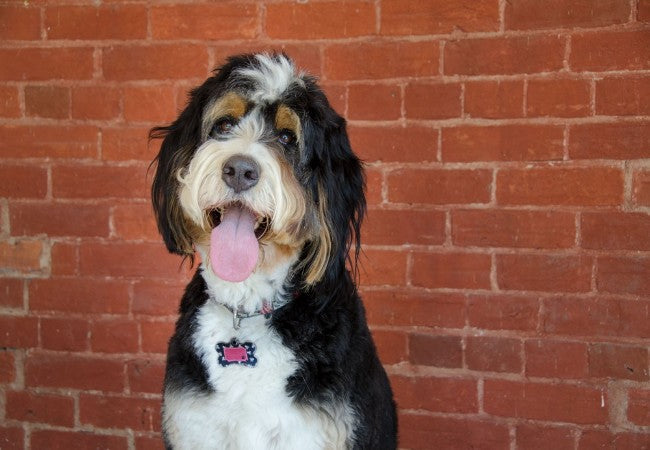Bernedoodle 2025 Guide: Care, Temperament & Grooming 🐶✨

In this article
Bernedoodle 2025 Guide: Care, Temperament & Grooming 🐶✨
By Dr. Duncan Houston BVSc
The Bernedoodle is the delightful offspring of a Bernese Mountain Dog and a Poodle, known for combining intelligence, loyalty, and a low-shedding coat. Beloved for their playful yet gentle nature, Bernedoodles make outstanding companions for families and dream dogs for allergy-sensitive owners—even though no dog is truly hypoallergenic.
Origins & Size Variations 📜
Developed in the early 2000s by breeders like Sherry Rupke, Bernedoodles are categorized by generation (F1, F1b, F2) and by size:
- Standard: 50–90 lb, up to 29 in tall, lifespan ~12–15 yrs
- Miniature: 25–49 lb, 18–22 in tall, lifespan ~14–16 yrs
- Tiny/Toy: 10–24 lb, 12–17 in tall, lifespan up to 18 yrs
Temperament & Personality 🧠
Bernedoodles are known for their affectionate, goofy, and intelligent dispositions—full of energy yet able to relax with their families. While generally easy-going, they can be stubborn or energetic during adolescence, requiring consistent training.
“They are very sweet and very smart, but at least at a young age, very high energy and stubborn… huge bursts of energy and then crash.” — Reddit owner
Exercise & Mental Enrichment 🏃♂️
- Needs ~1–2 hours of daily exercise—walks, playtime, mental games
- Scent work, puzzle toys, and group training help manage high energy
- Off-leash play should be gradual and in secure areas—large size means strong pulling potential
Training Essentials 🎓
- Start puppy training early with positive reinforcement and short, engaging sessions
- Crate training helps with potty training and independence
- Introduce off-leash skills slowly—leash training is key for large standards
- Bell potty systems aid housetraining in intelligent breeds
Grooming & Coat Care 🛁
Their coat varies with generation and parentage, from wavy to curly, often low-shedding:
- Curly coats need daily brushing; wavy/straight – at least a few times weekly
- Bath every 4–6 weeks or as needed; avoid over-bathing to prevent dry skin
- Trim every 6–8 weeks to manage coat and matting
- Don’t neglect nails, ears, and teeth—clean weekly, trim nails regularly
Nutrition & Feeding 🍽️
- Choose high-quality food for large or medium active breeds, depending on size
- Split daily food into two meals to reduce bloat risk and maintain metabolism
- Incorporate joint and skin-support supplements such as glucosamine and omega-3s
- Monitor weight to prevent obesity, common with their love of food
Health & Veterinary Care 🩺
Berndoodles may inherit conditions from parent breeds, including:
- Hip and elbow dysplasia
- Heart issues, thyroid disorders
- Allergies or skin conditions
- Von Willebrand disease
Vet screening is essential; lifespans range from 12–18 years depending on size. Telehealth via Ask A Vet supports chronic care and diet strategies.
Ideal Home & Family Fit 🏡
- Adaptable across living situations—standards need space; minis and toys fit apartments
- Great with children and other pets with early socialization and structured training
- Requires companionship—prone to separation anxiety if left alone too long
- Regular grooming and activity commitments make them a moderately high-maintenance breed
Pros & Cons Summary
| Pros ✅ | Cons ⚠️ |
|---|---|
| Friendly, intelligent, low-shedding | Coat maintenance routine needed |
| Great family and therapy dog potential | High energy and sometimes stubborn adolescence |
| Size options suit varied homes | Potential for joint issues and anxiety |
| Long lifespan | Requires consistent training and grooming |
Final Thoughts from Dr Duncan Houston BVSc
The Bernedoodle is a joyful and versatile companion that shines in active, loving homes. They blend intelligence and affection with allergy-friendly coats—but they thrive when provided grooming, structure, and mental engagement. Use Ask A Vet for health oversight, Woopf for training tools, and Purrz for grooming products to give your Bernedoodle the best life possible. 🐶






